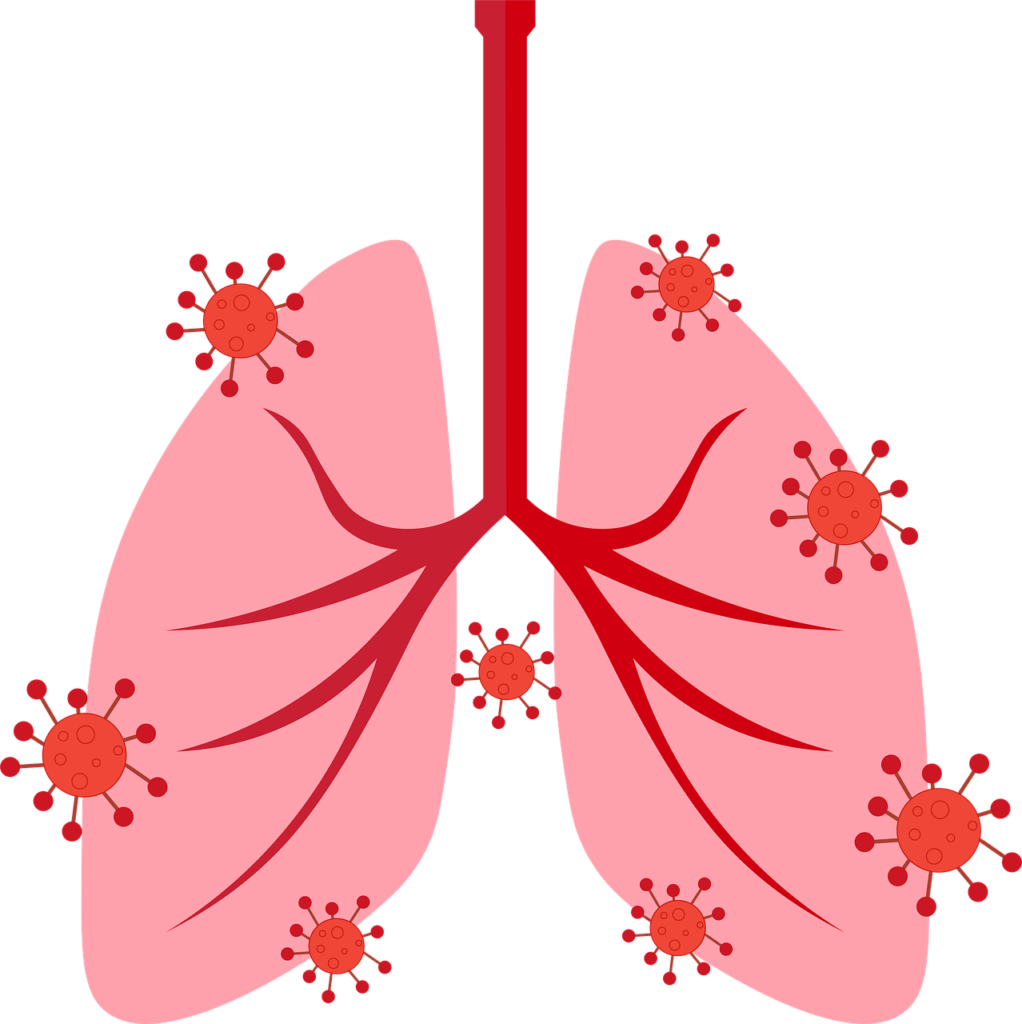Have ever wondered about what is the best medicine for lung infection? Lung infections, whether bacterial, viral, or fungal in nature, can cause you significant discomfort and disrupt your daily life. Finding the right medication for treating lung infections is crucial to alleviate symptoms and promote your full recovery. Here, I will explore the best medicines for lung infections, providing detailed information and examples to help you understand and weigh your options.
Importance of Finding the Best Medicine for Lung Infection
Finding the best medicine for a lung infection is crucial for several reasons:
- Effective Treatment: The right medication ensures effective treatment, targeting the specific type of infection causing the illness. Different infections require different medications—antibiotics for bacterial infections, antivirals for viral infections, etc. Choosing the appropriate medicine helps combat the infection effectively.
- Preventing Complications: Lung infections can lead to severe complications if not treated properly. Pneumonia, for instance, can cause respiratory failure or other life-threatening conditions. The right medicine can prevent these complications by eliminating the infection.
- Reducing Spread: Some lung infections, like tuberculosis or certain strains of flu, are highly contagious. Administering the correct medicine reduces the duration and severity of symptoms, minimizing the chances of spreading the infection to others.
- Improving Recovery: Effective medication speeds up recovery. It helps the body fight the infection more efficiently, reducing the duration of illness and the associated discomfort.
- Avoiding Antibiotic Resistance: Using the right antibiotics for bacterial infections helps prevent the development of antibiotic resistance. Overuse or misuse of antibiotics can lead to resistant strains of bacteria, making infections harder to treat in the future.
- Individual Health Factors: Certain medications might interact with other drugs or conditions an individual has. Finding the best medicine involves considering these factors to ensure both the infection and the individual’s overall health are managed effectively.
- Long-Term Health: Chronic lung infections, like those associated with conditions such as cystic fibrosis, demand precise medication to manage and control the infection. Finding the most effective medication in such cases is vital for the individual’s long-term health and quality of life.
Overview of Lung Infection and its Types

Lung infections, broadly termed respiratory tract infections, affect the lungs and can be caused by various pathogens such as bacteria, viruses, fungi, or parasites. They encompass a range of conditions, each with its unique characteristics and treatment approaches. Here’s an overview of some common types:
- Pneumonia: This infection inflames air sacs in one or both lungs. It can be caused by bacteria, viruses, or fungi. Symptoms include cough, fever, difficulty breathing, and chest pain. Treatment involves antibiotics for bacterial pneumonia and antivirals or antifungals for other types.
- Bronchitis: It’s an inflammation of the bronchial tubes, often due to viruses or bacteria. Acute bronchitis leads to coughing, mucus production, and sometimes mild fever. Chronic bronchitis, commonly associated with smoking, causes long-term coughing with mucus.
- Tuberculosis (TB): A bacterial infection caused by Mycobacterium tuberculosis. TB primarily affects the lungs but can also target other parts of the body. Symptoms include persistent cough, chest pain, weight loss, and fatigue. Treatment involves a combination of antibiotics taken for an extended period.
- Influenza (Flu): Caused by influenza viruses, flu affects the respiratory system and can lead to severe complications, especially in high-risk groups. Symptoms include fever, cough, sore throat, body aches, and fatigue. Vaccination and antiviral medications help prevent and treat flu.
- Fungal Infections: Various fungi can cause lung infections, such as aspergillosis or histoplasmosis. These infections are often seen in individuals with weakened immune systems. Treatment involves antifungal medications.
- Pulmonary Abscess: This is a collection of pus in the lung tissue, usually resulting from a bacterial infection. It leads to symptoms like fever, cough with foul-smelling or bloody mucus, and chest pain. Antibiotics and sometimes drainage procedures are used for treatment.
- Pneumocystis Pneumonia (PCP): Common in individuals with weakened immune systems, such as those with HIV/AIDS, PCP is caused by a fungus called Pneumocystis jirovecii. Symptoms include fever, cough, and difficulty breathing. Treatment involves antibiotics or antifungal drugs.
The following are the best treatments for lung infection:
1. Antibiotics
Antibiotics are a primary treatment for bacterial lung infections. They work by killing or inhibiting the growth of bacteria. However, it’s important to note that antibiotics are not effective against viral infections.
Types of Antibiotics for Lung Infections
- Penicillins: Effective against a broad range of bacteria. They include amoxicillin, ampicillin, and penicillin derivatives.
- Macrolides: Useful for respiratory infections, especially when patients are allergic to penicillin. Examples include azithromycin, clarithromycin, and erythromycin.
- Fluoroquinolones: Reserved for more severe infections or when other antibiotics aren’t effective. Ciprofloxacin and levofloxacin are common fluoroquinolones.
- Cephalosporins: Similar to penicillins but often used when a patient doesn’t respond to other treatments. Ceftriaxone and cefuroxime are examples.
- Tetracyclines: Effective against various bacteria, but their use may be limited due to side effects. Examples include doxycycline and minocycline.
- Sulfonamides: Not as commonly used today but can be effective against certain bacteria. Trimethoprim-sulfamethoxazole is a common example.
Commonly Prescribed Antibiotics for Lung Infections
- Amoxicillin: Often prescribed for mild to moderate bacterial respiratory infections. It’s effective against a broad spectrum of bacteria and is often used to treat community-acquired pneumonia.
- Azithromycin: Used for a wide range of respiratory tract infections, including bronchitis and pneumonia.
- Ciprofloxacin: Reserved for severe or resistant infections.
- Ceftriaxone: Administered via injection, it’s used for more serious infections like community-acquired pneumonia.
Effectiveness and Potential Side Effects
- Effectiveness: Antibiotics are highly effective against bacterial lung infections when used appropriately. They work by either killing the bacteria or preventing their growth.
- Side Effects: While effective, antibiotics can cause side effects such as allergic reactions, digestive issues (nausea, diarrhea), and in some cases, more severe effects like antibiotic-associated diarrhea or the development of antibiotic resistance in bacteria.
2. Antiviral Medications
Antiviral medications are specifically designed to treat viral lung infections, such as influenza (flu) or respiratory syncytial virus (RSV).
Antiviral medications are designed to target specific viruses by inhibiting their replication and reducing their ability to spread within the body. Here’s an overview:
- Antiviral Medications for Viral Lung Infections:
- Neuraminidase Inhibitors: These medications inhibit the neuraminidase enzyme, which helps the virus leave infected cells. They’re commonly used for influenza infections.
- Nucleoside Analogues: These compounds mimic the building blocks of DNA or RNA, disrupting viral replication. They’re used for various viral infections, including respiratory viruses.
- Protease Inhibitors: These drugs interfere with viral protein production, hindering the virus’s ability to replicate and spread.
- Fusion Inhibitors: They prevent viruses from entering and infecting healthy cells by blocking the fusion of the viral membrane with the cell membrane.
- Commonly Prescribed Antiviral Drugs for Lung Infections:
- Oseltamivir (Tamiflu): A neuraminidase inhibitor commonly used to treat and prevent influenza infections.
- Zanamivir (Relenza): Another neuraminidase inhibitor administered via inhalation for treating influenza.
- Remdesivir: Initially developed for Ebola, it has shown efficacy against some respiratory viruses like SARS-CoV-2 (the virus causing COVID-19).
- Acyclovir and Valacyclovir: Primarily used for herpes viruses that might affect the lungs, causing conditions like herpes simplex pneumonia.
- Limitations and Effectiveness:
- Specificity: Antivirals are often specific to certain viruses. For instance, medications effective against influenza might not work against other viruses causing lung infections.
- Timing: Antivirals are most effective when administered early in the course of the illness. Delayed treatment might reduce their effectiveness.
- Resistance: Viruses can develop resistance to antiviral medications, limiting their long-term efficacy.
- Limited Treatment Options: Compared to antibiotics for bacterial infections, the number of effective antiviral medications is relatively limited.

3. Bronchodilators
- Bronchodilators are often used to treat lung infections that cause bronchospasms and difficulty breathing. They work by relaxing the muscles in the airways. Common bronchodilators include:
a. Albuterol:
- Provides quick relief for symptoms like shortness of breath and wheezing.
- Example brand names: ProAir HFA, Ventolin HFA.
b. Formoterol:
- A long-acting bronchodilator that helps keep the airways open for a more extended period.
- Example brand names: Perforomist, Symbicort.
- Expectorants and Mucolytics: Expectorants and mucolytics help loosen mucus and phlegm, making it easier to cough and clear the airways. These can be beneficial for lung infections accompanied by excessive mucus production.
a. Guaifenesin:
- Commonly used as an expectorant to help thin and loosen mucus in the respiratory tract.
- Example brand names: Mucinex, Robitussin.
4. Anti-inflammatory Drugs
Antiviral medications are designed to target specific viruses by inhibiting their replication and reducing their ability to spread within the body. Here’s an overview:
Antiviral Medications for Viral Lung Infections
- Neuraminidase Inhibitors: These medications inhibit the neuraminidase enzyme, which helps the virus leave infected cells. They’re commonly used for influenza infections.
- Nucleoside Analogues: These compounds mimic the building blocks of DNA or RNA, disrupting viral replication. They’re used for various viral infections, including respiratory viruses.
- Protease Inhibitors: These drugs interfere with viral protein production, hindering the virus’s ability to replicate and spread.
- Fusion Inhibitors: They prevent viruses from entering and infecting healthy cells by blocking the fusion of the viral membrane with the cell membrane.
Commonly Prescribed Antiviral Drugs for Lung Infections
- Oseltamivir (Tamiflu): A neuraminidase inhibitor commonly used to treat and prevent influenza infections.
- Zanamivir (Relenza): Another neuraminidase inhibitor administered via inhalation for treating influenza.
- Remdesivir: Initially developed for Ebola, it has shown efficacy against some respiratory viruses like SARS-CoV-2 (the virus causing COVID-19).
- Acyclovir and Valacyclovir: Primarily used for herpes viruses that might affect the lungs, causing conditions like herpes simplex pneumonia.
Limitations and Effectiveness
- Specificity: Antivirals are often specific to certain viruses. For instance, medications effective against influenza might not work against other viruses causing lung infections.
- Timing: Antivirals are most effective when administered early in the course of the illness. Delayed treatment might reduce their effectiveness.
- Resistance: Viruses can develop resistance to antiviral medications, limiting their long-term efficacy.
- Limited Treatment Options: Compared to antibiotics for bacterial infections, the number of effective antiviral medications is relatively limited.
Anti-inflammatory Medications for Lung Inflammation
- Corticosteroids: These drugs mimic the effects of hormones produced by the adrenal glands. They are potent anti-inflammatory agents that can reduce swelling and inflammation in the airways.
- Nonsteroidal Anti-Inflammatory Drugs (NSAIDs): While primarily used for pain relief and reducing fever, some NSAIDs like ibuprofen might help alleviate inflammation associated with lung infections.
Commonly Used Anti-Inflammatory Drugs for Lung Infections
- Corticosteroids: Prednisone, prednisolone, and dexamethasone are commonly prescribed corticosteroids used to manage inflammation in the lungs. They are often administered orally, by inhalation, or intravenously in severe cases.
- NSAIDs: Ibuprofen and aspirin are examples of NSAIDs that might be used to alleviate inflammation and discomfort associated with lung infections.
Benefits and Potential Risks
Benefits
- Reduced Inflammation: Anti-inflammatory medications help alleviate swelling, redness, and irritation in the lungs, which can improve breathing and overall comfort.
- Symptom Relief: They can alleviate symptoms such as coughing, wheezing, and chest discomfort associated with lung infections.
Potential Risks
- Suppression of Immune Response: Prolonged use of corticosteroids might suppress the immune system, making it harder for the body to fight the infection.
- Side Effects: Both corticosteroids and NSAIDs can have side effects like gastrointestinal issues (stomach ulcers, bleeding), increased blood pressure, fluid retention, and in the case of corticosteroids, potential long-term effects on bone density and adrenal function.
- Masking Symptoms: While reducing inflammation, these medications might mask underlying infections, delaying appropriate treatment.
5. Natural Remedies for Lung Infections
Herbal remedies have been used for centuries in traditional medicine to alleviate symptoms and support the body’s immune response during lung infections. Here are some herbs commonly associated with potential benefits for treating lung infections:
Herbal Remedies for Lung Infections
- Echinacea: Known for its immune-boosting properties, echinacea is believed to support the immune system and help fight respiratory infections.
- Ginger: Ginger possesses anti-inflammatory and antimicrobial properties. It’s often used to soothe sore throats, ease coughs, and reduce inflammation in the respiratory tract.
- Turmeric: Contains curcumin, which has anti-inflammatory and antioxidant properties. It may help reduce inflammation in the lungs and support the immune system.
- Licorice Root: Known for its expectorant properties, licorice root can help loosen mucus and ease coughing. However, it should be used cautiously, especially in individuals with high blood pressure or other health conditions.
- Thyme: Contains compounds with expectorant and antimicrobial properties. Thyme tea or extracts may help alleviate respiratory symptoms and fight infections.
- Oregano: Rich in compounds like carvacrol and thymol, oregano has antimicrobial properties. Oregano oil or tea may potentially aid in fighting respiratory infections.
- Garlic: Renowned for its antimicrobial properties, garlic is believed to support the immune system and help combat various infections.
Benefits and Considerations
- Expectorant Properties: Some herbs like licorice root, thyme, and oregano may help loosen phlegm and ease coughing, making it easier to expel mucus from the lungs.
- Antimicrobial Effects: Many herbs possess compounds that exhibit antimicrobial properties, potentially aiding in fighting off the infectious agents causing lung infections.
- Anti-inflammatory Effects: Certain herbs like ginger, turmeric, and thyme may help reduce inflammation in the respiratory tract.
While these herbal remedies have been used traditionally and are thought to have potential benefits, it’s important to approach their use with caution:
- Quality and Dosage: Herbal remedies vary in potency and quality. It’s crucial to use standardized products from reputable sources and follow recommended dosages.
- Interaction with Medications: Herbal remedies might interact with prescribed medications, leading to adverse effects. It’s advisable to consult a healthcare professional before using herbal remedies, especially if taking other medications.
- Individual Responses: Individuals might react differently to herbal remedies. Some may experience allergic reactions or other side effects.
Seek out health information at www.medicalantidote.com.



